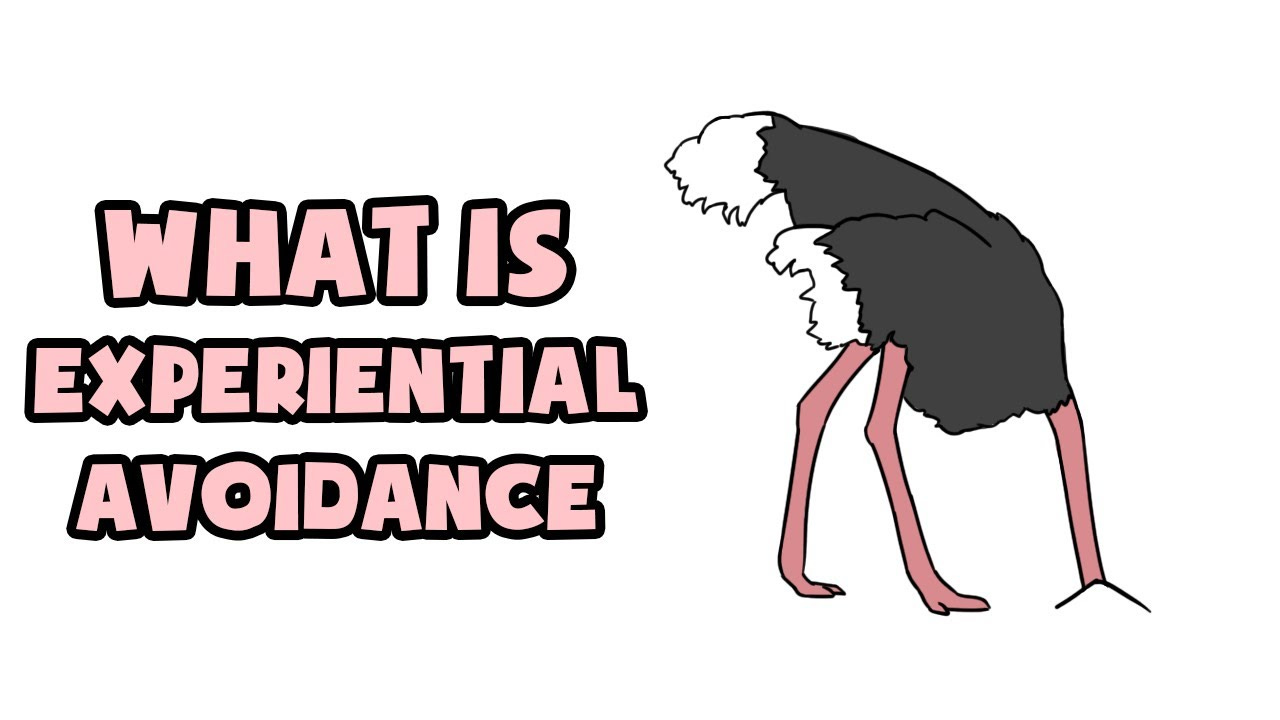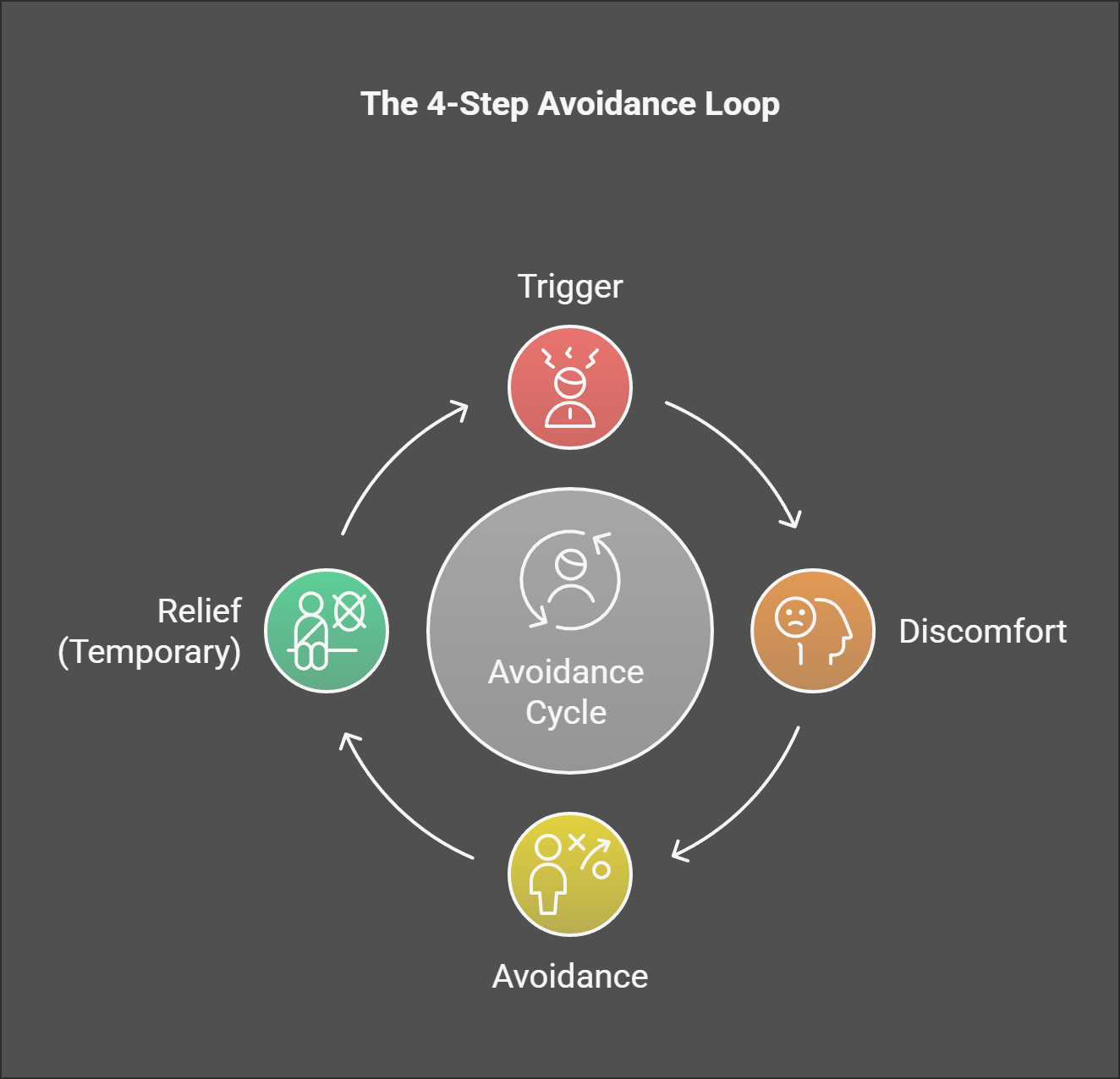🚪 ADHD Experiential Avoidance: Why You Avoid Things (and how to break the cycle?) 🔄🚀
Escape the cycle of avoidance and take control of your life with practical ADHD-friendly strategies. 🌟🛠️
🔥 The Avoidance Spiral…
You have an important email to send. You open your inbox… but suddenly, you feel overwhelmed. Your stomach tightens. You tell yourself, I’ll do it later.
Instead, you scroll on your phone. Maybe you tidy your desk. Hours pass.
The task looms larger in your mind. Now it feels impossible.
👉 Why do I keep avoiding things I know I need to do?
If this sounds familiar, you’re not alone. ADHD and experiential avoidance go hand in hand. Avoiding discomfort—whether it’s stress, boredom, or self-doubt—is a powerful force that can trap you in procrastination, anxiety, and missed opportunities.
But why does this happen? And how can you break free?
Let’s dive in! 🚀
🧠 What Is Experiential Avoidance?
Experiential avoidance is the tendency to avoid uncomfortable thoughts, feelings or tasks by distracting yourself or escaping the situation.
People with ADHD often struggle with this because our brains react more intensely to discomfort and seek instant relief through distractions.
⚡ When Does It Strike?
🔴 Boring tasks: Paperwork, emails, and chores feel unbearable.
😰 Anxiety-inducing tasks: Difficult conversations, doctor’s appointments or financial planning feel too overwhelming.
🤯 Perfectionism pressure: If you can’t do it perfectly, you don’t want to do it at all.
⏳ Fear of failure: You put things off because you’re afraid you won’t do them well enough.
🔄 The ADHD Avoidance Cycle:
From Trigger to Escape
Avoidance isn’t just a random bad habit—it follows a predictable loop in the ADHD brain. Understanding this cycle is the first step to breaking it.
🔁 The 4-Step Avoidance Loop
1️⃣ Trigger → A task feels boring, stressful, overwhelming or emotionally uncomfortable.
2️⃣ Discomfort → Anxiety, dread, or self-doubt kicks in.
3️⃣ Avoidance → You distract yourself to escape the discomfort (scrolling, snacking, cleaning etc.).
4️⃣ Relief (Temporary) → Avoidance feels good at first… but the task now feels even more impossible later.
💥 Result? Stress builds up, deadlines get missed, missed opportunities and
self-doubt increases.
The cycle repeats. 🔄
🎭 Example of the Cycle in Action
😰 Trigger: You need to call your doctor for an appointment.
⚡ Discomfort: "Ugh, I don’t know what to say… what if I sound awkward?"
🚀 Avoidance: You scroll Instagram instead. "I’ll do it later."
😌 Temporary Relief: The anxiety fades for now, but now the call feels even harder to make.
Sound familiar? This cycle fuels procrastination and emotional exhaustion.
But breaking it is possible!
🧐 Why Does This Happen? (The ADHD Brain at Work)
Experiential avoidance isn’t just “laziness” or “bad habits.” It’s deeply connected to how the ADHD brain processes discomfort.
🔬 Scientific Backing:
📉 Lower dopamine levels → ADHD brains have less dopamine, the neurotransmitter that helps regulate motivation and reward. This makes difficult or boring tasks feel physically painful to start. (Volkow et al., 2009)
🧠 Overactive amygdala → ADHDers have a stronger fear response to stress and discomfort, making avoidance feel like the easiest escape. (Shaw et al., 2014)
⚡ Time blindness & urgency addiction → We often wait until the last possible moment to act because urgency temporarily overrides avoidance. (Barkley, 2010)
💡 Translation?
Your brain is wired to dodge discomfort. But avoidance only makes tasks more overwhelming - fueling a cycle of stress and procrastination.
🚨 Impact on Daily ADHD Life
Avoidance might seem harmless, but it snowballs into bigger problems.
Here’s how it shows up:
🕒 Procrastination loops → Small tasks pile up, leading to last-minute panic.
📉 Missed opportunities → Job applications, creative projects, or personal goals get abandoned before they start.
⚡ Emotional exhaustion → Guilt and stress build up from constantly
putting things off.
💬 Relationship strain → Ignoring difficult conversations leads to misunderstandings and conflict.
💰 Financial stress → Avoiding bills or budgeting creates long-term money problems.
The more you avoid, the harder life becomes.
Breaking the cycle is key to regaining control.
✅ 5 ADHD-Proof Strategies to Overcome Avoidance
1️⃣ The 5-Minute Rule ⏳
Tell yourself you’ll do a task for just 5 minutes. Most of the time, once you start, you’ll keep going.
2️⃣ The "What’s the Worst That Can Happen?" Trick 🤔
When avoidance kicks in, ask yourself: What’s the absolute worst outcome?
Most of the time, the fear is worse than reality.
3️⃣ Body Doubling 👯♂️
Having someone around—even virtually—makes it easier to stay engaged in tasks you’d normally avoid.
Try coworking with a friend or using a focus group like Lifeat.io.
4️⃣ Temptation Bundling 🎧
Pair a boring task with something enjoyable.
Example: Listen to your favorite podcast or music only while doing chores.
5️⃣ Name the Emotion 🎭
Instead of avoiding a task, acknowledge why it feels uncomfortable:
✅ “I’m avoiding this email because I’m afraid I’ll say something wrong.”
✅ “I don’t want to do this project because I don’t know where to start.”
Naming the emotion helps separate the feeling from the task so you can move forward.
🎯 Action Plan:
Break Free from Avoidance in 3 Steps
✅ Step 1: Identify Your Avoidance Patterns
What tasks are you avoiding? What emotions trigger avoidance?
✅ Step 2: Use the 5 Strategies Daily
⏳ Start with 5 minutes.
🤔 Ask, What’s the worst that can happen?
👯 Work with a body double at Lifeat.io
🎧 Pair tasks with fun.
🎭 Name the emotion.
✅ Step 3: Track Progress & Celebrate Wins
Each time you push through avoidance, celebrate it! Small wins build momentum.
🔥 Quick Recap: The 5 Avoidance Fixes
💡 Start small (5-minute rule).
🤔 Reframe fear (worst-case scenario trick).
👯 Work with a body double.
🎧 Pair tasks with rewards.
🎭 Name the emotion to defuse avoidance.
🚀 Final Thought:
Discomfort is Temporary, Growth is Forever
Avoidance doesn’t define you. The more you face discomfort, the stronger and more resilient you become.
🎯 Try one of these strategies today.
💬 Then tell me—which one worked best for you? 👇
📢 Share this with someone who needs it!
📚 Resources Mentioned in This Article
1️⃣ Volkow et al., 2009 – Dopamine & ADHD Motivation
2️⃣ Shaw et al., 2014 – ADHD Brain Structure & Emotion Regulation
3️⃣ Barkley, 2010 – ADHD Executive Function & Time Management
4️⃣ Lifeat.io – Virtual Body Doubling for Productivity









Excellent, thank you! I'd been doing the 5 minute thing without realizing it. I tell myself to just find something, somewhere to start. I call it "finding the edge". Sort of like peeling a label off something, if I can find the edge of a task that seems doable, I can get started. If I can start, I can usually finish and do a few more things with momentum. But man, that starting point! So thank you again for new tricks!
i rarely read an article about adhd that so perfectly nails my entire life experience. thank you for acknowledging that sometimes the task does result in the worst case scenario.
for those of us with ptsd on top of the adhd, it’s difficult to tell the difference between anxiety and terror. anxiety is often proven wrong, but terror based on personal experience is very different.